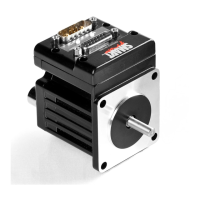Moog Animatics SmartMotor™ Developer's Guide,Rev. L
Page 780 of 909
VLD(variable,number)
Variable Load
APPLICATION: EEPROM (Nonvolatile Memory)
DESCRIPTION: Sequentially load (transfer) user variables from data EEPROM
EXECUTION: Immediate
CONDITIONAL TO: EPTR= variable
LIMITATIONS: N/A
READ/REPORT: N/A
WRITE: N/A
LANGUAGE ACCESS: N/A
UNITS: N/A
RANGE OF VALUES: See details
TYPICAL VALUES: See details
DEFAULT VALUE: N/A
FIRMWARE VERSION: 5.x and later
COMBITRONIC: N/A
DETAILED DESCRIPTION:
The VST() and VLD() commands are used to store data (write) to and load data (read) from
the internal nonvolatile RAM (EEPROM), respectively. To read or write into this memory
space, a memory address location must first be specified with the EPTR=formula command,
where formula requires a value between 0 and 32767. Then use the VST() command to store
the data or the VLD() command to retrieve the data.
NOTE: Regardless of the size of the variable being accessed, the EPTR pointer
always refers to bytes.
To read in a series of values and assign these values to a sequence of user variables, use the
VLD(variable, number) command. The first parameter (variable) specifies the name of the
user variable as the start of a sequence of variables to load. The second parameter (number)
specifies the number of variables in the sequence of variables to store.
The command interpreter automatically notes the size of the defined variable as 1, 2 or 4
bytes long.
The value parameter is a count of the number of units to transfer. The number of bytes in this
units depends on the variable designated (refer to the following table). For example, VSD(aw
[0],3) transfers three words in sequence, where each word is two bytes. In this example, the
total number of bytes stored is six.
Part 2: Commands: VLD(variable,number)

